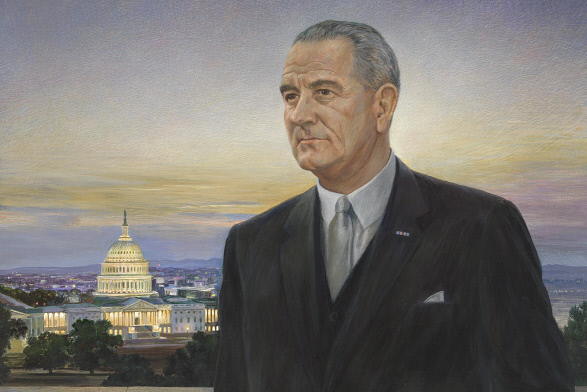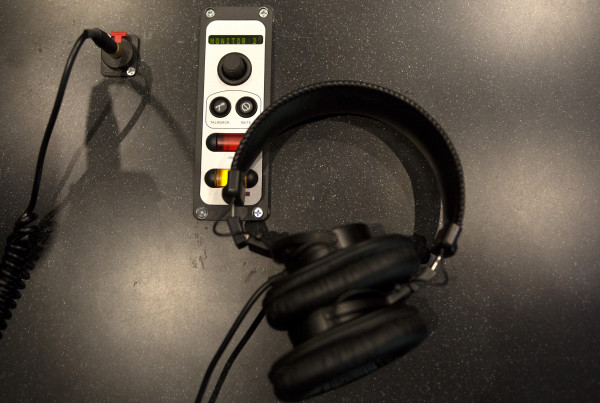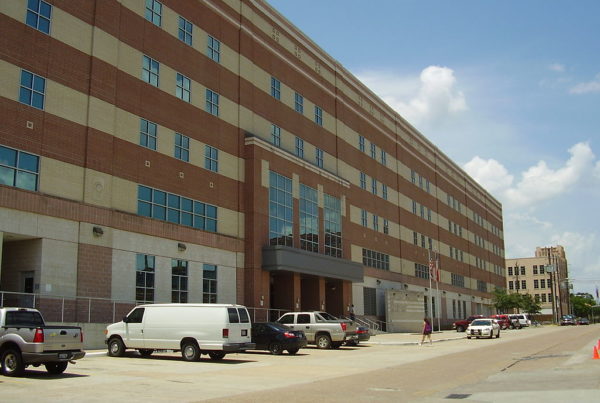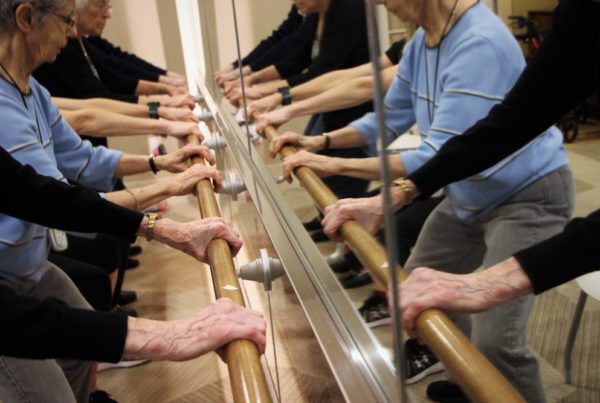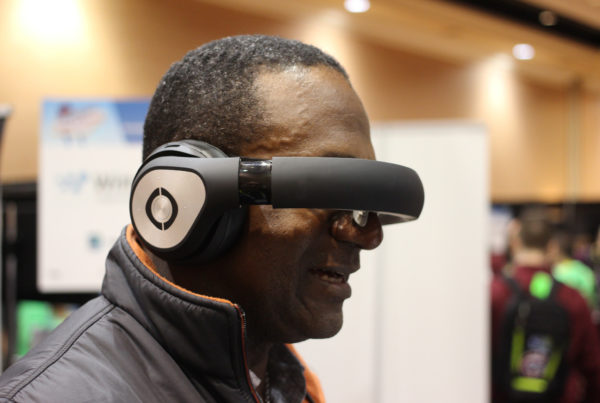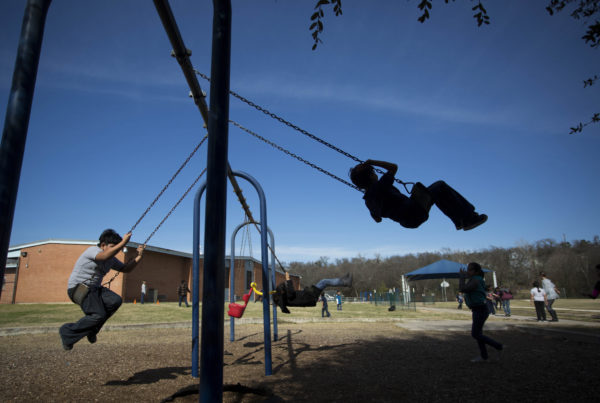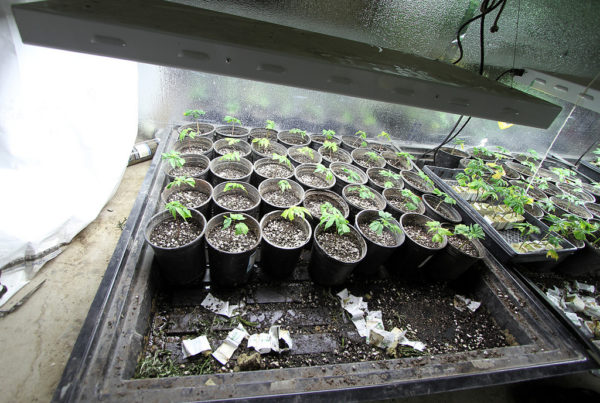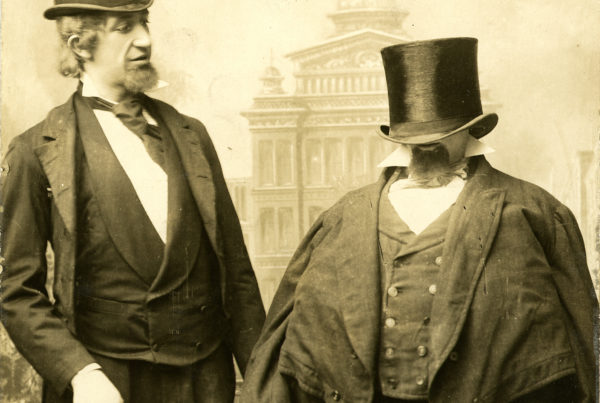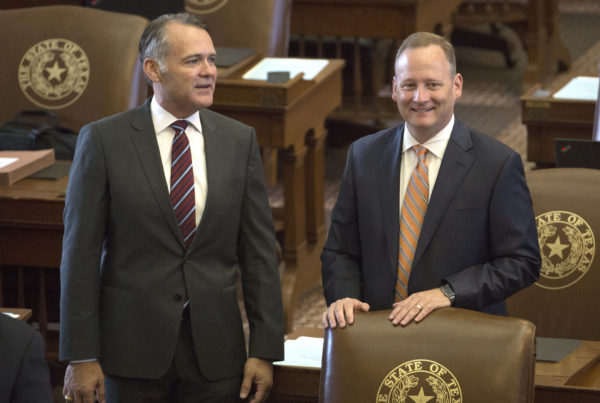This was the week of the big portrait unveiling for Barack and Michelle Obama. The former president and first lady seemed pretty pleased with their portrayals. Presidential portraits aren’t always so well-received, though, which was the case with Texas’ own Lyndon Baines Johnson in 1965.
If you know anything about this story, it’s the quote – the first thing President Lyndon Baines Johnson said when he saw his official portrait.
“He said ‘That’s the ugliest thing I ever saw,” Peter Hurd said.
That was the artist, Peter Hurd, recorded at Hurd’s New Mexico home in 1969. The story quickly made national news.
Hurd got the job because Johnson liked his work. He did some portraits, since they helped pay the bills, but he was best-known for landscapes of his native southwest. They reminded Johnson of Texas. On tours of the White House, the president would even tell guests that a Hurd painting was of West Texas, when it actually depicted southeast New Mexico. Hurd took the gig knowing that this would not be a typical portrait commission. He usually needed 30 hours with a live model for a portrait like this one. He wouldn’t get that from Johnson.
“Because it’s sort of like asking Lyndon to take castor oil,” Lady Bird Johnson said in her personal journal.
Hurd had painted Johnson once before, for Time Magazine, when the president was named ‘Person of the Year’ for 1964. But that was a much smaller undertaking. This time, he needed 30 hours. Lady Bird secured one half-hour sitting at Camp David. It was at the end of a busy weekend, and the president slept through most of it. When he looked at the sketch Hurd had made, he said he looked like an old drunk.
“So that was that,” Hurd said. “I had no remark to make at that. I don’t think I was particularly chagrined, I more or less agreed with him, really. It wasn’t much.”
In the end, it took Hurd 400 hours to complete the portrait. He relied exclusively on photographs, which wasn’t his strong suit. The only exceptions were a neighboring rancher whose hands Hurd thought resembled Johnson’s, and the top of the president’s dozing head. The final product showed LBJ from the waist up, standing on a balcony, holding a book on U.S. history and staring thoughtfully into the distance. The Capitol at twilight is in the background – which Hurd didn’t like, but Lady Bird insisted upon its inclusion. When he finished, he sent the portrait to the Johnson’s ranch in the Hill Country ahead of him and his wife Henriette. It was supposed to be viewed at a specific time and place to be seen in the best light. Instead, someone unpacked the portrait and set it up for guests to see. It was not well-received.
“I must confess, I did not like the background,” Lady Bird said. “Not at all, too violet. And the hands were not Lyndon’s gnarled, peasant hands, that have so much strength and so much fight in them. But I did like the head. The expression was searching, hopeful. There was an element of the noble in it.”
The Hurds arrived, and immediately they both sensed tension in the house. Peter thought it might have something to do with the portrait. Lady Bird confirmed it.
“As we sat down to luncheon Mrs. Johnson said to me, ‘Peter, I must tell you – there’s been a little static about the portrait,’” he said.
They all viewed it together – in a light Hurd said couldn’t have been worse – and LBJ gave the now-famous quote.
Why Johnson himself disliked the painting is not totally clear. There are other paintings of himself he did like. And art critics have validated Hurd’s work in the years since. The Hurds thought that Johnson may have just been having a bad day. He’d just had gallbladder surgery, the Vietnam war was weighing on him, and his approval rating was starting to dip.
“His public relations were lousy, he’d had this operation which was causing him more pain and trouble. Everything he gazed at with a jaundiced eye, and I mean jaundiced,” Henriette Hurd said.
At first, Hurd was unsure what to do with the painting after Johnson rejected it. A promoter in St. Louis offered $50,000 to buy the piece, but Hurd didn’t want to sell it. He was upset that Johnson rejected his work, but he still respected the office – respected the man, for that matter. So he took it on a tour.
“It did travel around our part of the country particularly a lot, and earned several thousand dollars,” he said.
Exhibitions of the portrait raised money for places like the Phoenix Zoo, the Santa Fe Opera, museums in Texas, Iowa, and elsewhere. Hurd said he didn’t keep a nickel of the proceeds. Ultimately, he donated the painting to its current home: the Smithsonian Institute’s National Portrait Gallery. The only caveat was that the painting not be displayed until after Johnson’s presidency. No hard feelings.
“It was all a great, wonderful, unforgettable experience,” Hurd said. “And I hope the Johnsons look at it with humor by now, I hope to goodness they do.”
Even today, almost 25 years after Hurd’s death, the LBJ portrait and quote still follow him around. It’s in the second paragraph of his obituary in the New York Times. But according to LBJ, he may not have even said it. On Johnson’s second-to-last day in office, he addressed the National Press Club. Part of the speech was about being misquoted. He said, “I remember that Peter Hurd painting. Do you all remember that? I never said it was ugly. Actually, I thought it was a pretty good likeness, except for one little detail: It left off the halo.”


